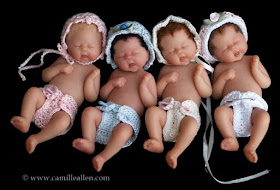Institute of Museum and Library Services
http://www.imls.gov/pdf/DiscussionGuide.pdf
pdf format
"Museums and libraries have a unique role as the primary stewards of culture and heritage
and, with this, a profound responsibility for ensuring that future generations have access to
original materials. How best to preserve and provide access to these materials in a way that
serves future generations should be a central question for museums and libraries in the
21 st century."
“We can push for change in intellectual property policies. We should
be the advocates for understanding that access isn’t enough, that
showing something on a screen is a start, but it is not the end of
what we aspire to, the people we serve want to be able to do [something]
with the material we are putting out.”
Joshua M. Greenberg, Director,
Digital Strategy and Scholarship, The New York Public Library
“Perhaps unintentionally, these institutions serve us as barometers of
our own collective humanity. It is here where our beliefs, our fears,
our hopes, and ultimately our laws about how we collect information
and share knowledge are realized publicly. It is the manifestation of
the way we believe in the process of acquiring and sharing knowledge.
To the extent that a populace uses its knowledge resources,
so too can be predicted the society’s well-being over time. One
of the most critical elements in building on lifelong learning and
fostering a nation of learners is the success or failure of engaging
broad swaths of our young people with our institutions in simple but
meaningful ways.”
—
Mark A. Wright, Director of Partnerships,
National Children’s Museum
After reading this article, I began thinking:
There are so many lonely people in the contemporary society, museums and libraries can be the special places to meet people. But probably there are. Already are.
I think there are problems…the first – security and difficulties to get there. Yes-yes! This is a problem! I am myself feeling more security home alone, especially when it is dark outside very early on the autumn-winter time…and cold…and raining…and crime-maniacs…horrible news.
Older people like to go to the Bingo clubs, there are Bingo near my home, I constantly seen buses and coaches have bringing older people to the Bingo, they are smoking outside and very happy and cheerful, they are not alone.
I like Novas CUC and A-Foundation, but it is no way I will go there when it is dark! I am scary!
Any solution?
To use own car to get to the museums and the libraries? Not everybody, especially older people and young people have car and it is again not a cheap and absolutely not “green”. Public buses? No. Not when it is dark.
I can be wrong. I am always over worried and over scared.
In this American article I found not so much new ideas but it makes me think about future of culture and society.
I like idea about beautiful and contemporary…cookies bakery(!) space inside the museum! I know, it is sound crazy! I imagine: traditional English(?) dressed older lady and gentlemen, tables and oven, children and parents…doing cupcakes, cookies and dough for biscuits. It can be edible and not edible cookies. Inedible cookies can be made for art. Dough for not edible cookies consists of flour, water and salt. When the dough dries out it can paint.
I have a lot of crazy ideas about the activities for museum and galleries!
I love to do something useful for society.
to remain meaningful institutions in the future. The meeting participants spoke of sustainability
beyond economic concerns, describing how true sustainability for museums and libraries
lies in being relevant to the communities in which they reside. Museums and libraries will
be relevant as long as their work is in service to the greater needs of society. As stewards
of cultural heritage, as content and context providers of information, as central places for
people to come together to learn and share with one another, it is here that museums and
libraries will shape their future. The questions for these institutions to continually ask themselves
are what makes us unique, what makes us matter, and who cares about what we do?
These questions force us to consider what the needs of our communities are and how we can
continue to meet them and be sustainable by being relevant to the world around us."
















